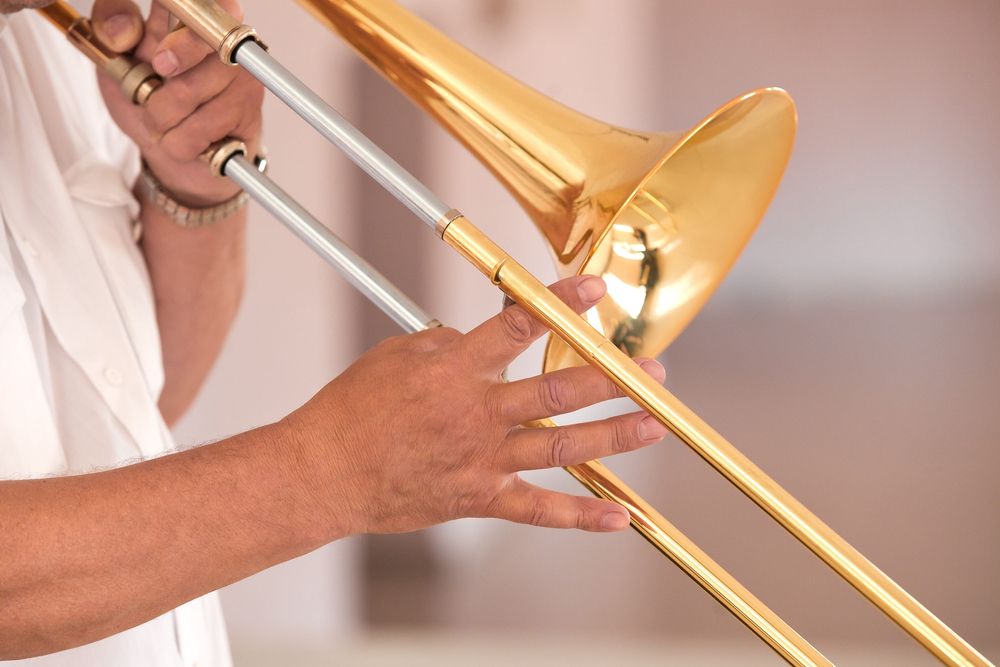3. Function and Playing Technique
It needs some space!
There are different designs for the trombone. Let's start with the most well-known one: the slide trombone.
Structurally, the trombone is a long tube. This tube is twisted twice by 180 degrees and then split into two parts in the middle. The first part is the "body," which, depending on the design, can contain one or two valves in addition to a tuning slide for fine tuning and ends with the bell. The second part is the U-shaped "trombone slide," which is inserted or screwed into the first part of the trombone at one end and into which the mouthpiece is inserted at the other end. This trombone slide is made with inner and outer tubes and is held together by two cross braces.
You can play the trombone while sitting or standing. The instrument is placed on the left shoulder and held with the left hand on the upper cross brace. The slide is guided with the fingers of the right hand on the lower cross brace.
By extending the slide, the length of the instrument and thus the pitch are changed. To play a scale with all whole and half steps, we need the fundamental pitch, where the slide is not moved, and six additional positions. These are also called "slides" or "positions." This function can be compared to pressing valves on other brass instruments. These slide positions can be calculated based on the length of the tubing, but trombone students are given some reference points to determine the slide positions. For example, the "3rd position" is approximately at the level of the bell rim, and the "4th position" is about 10 cm lower, and so on. Later, each slide position is finely controlled by ear or with a tuner.
Due to the built-in length of the instrument determined by the fundamental pitch, the lower slide positions require a correspondingly long arm and some space. Of course, there are alternative designs that make it possible for children and adolescents to play the trombone as well.
To produce sound, like with all brass instruments, the human body is used as a vibration generator. The vibration of the lips in the mouthpiece and the air blown into it generate the sound. This sound is amplified and brought to resonance by the instrument. The speed of the lip vibration determines the pitch, and the airflow determines the volume.
Due to its design, the trombone is the only brass instrument that allows for a "continuous" change in pitch. This enables effects like the commonly used glissando, where the slide is moved from one position to another without interrupting the flow of sound.





